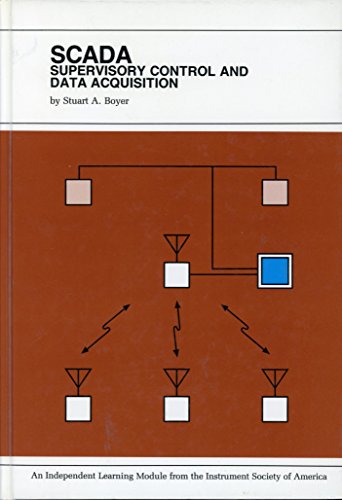Items related to SCADA: Supervisory Control and Data Acquisition (Independent...
SCADA: Supervisory Control and Data Acquisition (Independent Learning Module Book Series) - Hardcover

Synopsis
Supervisory control and data acquisition (SCADA) technology has evolved over the past 30 years as a method of monitoring and controlling large processes. This guide offers overviews of SCADA's component technologies, as well as details necessary to understand the big picture. SCADA processes cover areas that may be measured in the thousands of square miles, and have dimensions that may be hundreds, occasionally thousands, of miles long. Now a mature technology, SCADA includes, but is not limited to, software packages that an be incorporated in a larger system. After completing its 14 self-study units, readers should be conversant with SCADA nomenclature and architecture, understand the basic technology of the system's building blocks, understand its limitations, understand how it can benefit particular operations, and have a basis for selecting appropriate SCADA technologies for their operational requirements. Contents: What Is SCADA? A Brief History Real-Time Systems Remote Control - What Not to SCADA Communication Radio Remote Terminal Units Master Terminal Units Sensors, Actuators, and Wiring Applications Operator Interface SCADA Economics Bibliography and Glossary.
"synopsis" may belong to another edition of this title.
FREE shipping within U.S.A.
Destination, rates & speedsSearch results for SCADA: Supervisory Control and Data Acquisition (Independent...
Scada: Supervisory Control and Data Acquisition (INDEPENDENT LEARNING MODULE FROM THE INSTRUMENT SOCIETY OF AMERICA)
Seller: Zoom Books East, Glendale Heights, IL, U.S.A.
Condition: very_good. Book is in very good condition and may include minimal underlining highlighting. The book can also include "From the library of" labels. May not contain miscellaneous items toys, dvds, etc. . We offer 100% money back guarantee and 24 7 customer service. Seller Inventory # ZEV.1556172109.VG
Quantity: 1 available

